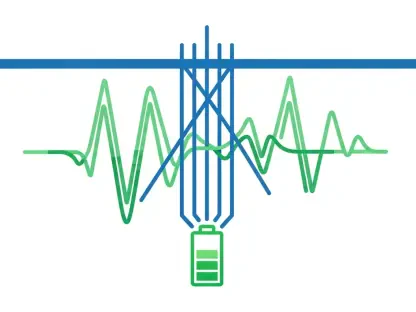Power quality is a critical aspect of ensuring reliable electrical service, particularly for large-scale commercial and industrial consumers. Poor power quality can disrupt operations, damage equipment, and lead to significant financial losses. According to the Electric Power Research Institute (EPRI) 2022 Power Quality Tech Newsletter, poor power quality events result in over $145 billion loss annually for U.S. businesses. This article explores how smart monitoring can enhance power quality and reliability, using the Orlando Utilities Commission (OUC) as a case study.
The Economic Impact of Poor Power Quality
Financial Strain on Businesses
Power quality events, such as interruptions and voltage sags, can halt production processes multiple times a year, causing immense financial strain. For instance, industrial and digital economy firms can lose approximately $1,477 every second during a one-second outage. These disruptions not only affect operational continuity but also incur substantial costs. Such significant financial impacts underscore the need for robust power quality management strategies to avoid unplanned downtime and process interruptions that can cripple business operations and profitability.
The direct correlation between power quality and financial health cannot be overstated. Equipment malfunctions and shutdowns resulting from poor power quality can lead to costly repairs and even total equipment replacement in severe cases. Additionally, poor power quality can lead to increased operational costs as businesses must allocate additional resources to troubleshooting and preventive measures. Beyond direct costs, there’s also an adverse effect on customer satisfaction and service delivery, as businesses struggle to maintain service levels amidst power disruptions. Therefore, understanding and improving power quality can be a vital part of a business’s risk management and operational strategy.
Root Causes of Power Quality Issues
A detailed ResearchGate paper by Sharmistha Bhattacharyya and Sjef Cobben from the Technical University of Eindhoven elaborates that 70% of power quality issues originate on the customer’s side due to factors like equipment operation and wiring. However, utilities frequently bear the brunt of the blame for these disturbances. This underscores the need for advanced technology to detect and analyze power quality problems. Such problems often stem from incompatible or faulty electrical installations within facilities, outdated or poorly maintained equipment, or the presence of transient disturbances created by machinery and other operational processes.
While the majority of power quality issues can originate on the customer’s side, utility companies are often compelled to address them to maintain overall grid stability and consumer satisfaction. These issues can be further exacerbated by external factors such as weather conditions, electrical accidents, or even vegetation interfering with power lines. The complexity of determining the exact cause of power quality problems necessitates sophisticated diagnostic and monitoring technologies. These tools are essential for identifying the precise origin of disturbances, enabling both utilities and customers to take corrective actions. Embracing these advanced technologies offers an opportunity to enhance overall power quality and reliability, building a resilient and sustainable power infrastructure.
Technological Interventions for Power Quality
The Role of Advanced Monitoring Tools
Advanced technology to detect and analyze power quality problems is indispensable. These tools aid in preempting future interruptions, offering utility companies critical insights to foster a robust partnership with their clients. Real-time monitoring capabilities, including load monitoring, voltage, internal pressure, and temperature, enable utilities to monitor the customer’s load profile accurately. This ability to continuously observe and analyze grid conditions ensures utility providers can address potential issues before they escalate into larger disruptions, significantly improving the grid’s overall reliability and performance.
The use of these advanced tools also supports predictive maintenance and strategic planning efforts. By collecting and analyzing data over time, utilities can identify patterns and trends in power quality events, informing proactive maintenance schedules and infrastructure upgrades. This data-driven approach allows for optimized resource allocation, reducing operational costs and enhancing service longevity. Utilities can better allocate resources to areas most in need, avoid unnecessary maintenance on functioning equipment, and ensure critical infrastructure is fortified against potential failures. Thus, advanced monitoring tools not only support immediate issue resolution but also contribute to long-term strategic planning and operational excellence.
Case Study: Orlando Utilities Commission (OUC)
Orlando Utilities Commission (OUC), ranked the 14th largest municipal utility in the U.S., exemplifies a proactive approach to maintaining power quality. Serving over 242,000 metered accounts, including 32,000 commercial and industrial customers, OUC’s commitment to reliability spans significant installations like international airports, tourism attractions, healthcare facilities, and extensive manufacturing and supply chain operations. The utility has built a reputation for robust infrastructure, aimed at supporting demanding industrial operations with minimal power quality disturbances, and maintaining a high standard of electrical service.
OUC’s commitment to reliability involves continuous infrastructure audits, advanced engineering solutions, and strategic deployment of automation technologies. By investing in resilient infrastructure and advanced monitoring tools, OUC demonstrates a forward-thinking approach to utility management. Their system encompasses dedicated underground feeders and automated transformers capable of switching power sources with minimal disruption, ensuring consistent power supply across various sectors. This longstanding commitment to reliability highlights the importance of proactive power quality management and the role of innovative technology in supporting critical infrastructure.
OUC’s Infrastructure and Challenges
Robust Infrastructure Design
OUC’s infrastructure, engineered for maximum reliability, had ensured uninterrupted power to a large manufacturing plant in Orlando for nearly six years. This system comprised three dedicated underground feeders and ten three-phase transformers, designed with automation capabilities such as auto-transfer switches to switch to backup power sources within two seconds of a disruption. This setup proved resilient even during severe weather events like Category 3 and 4 hurricanes. Such sophisticated infrastructure design plays a critical role in maintaining high levels of service reliability and operational continuity, essential for supporting vital business operations.
The automated features of OUC’s infrastructure mean that the system can quickly adapt to changing circumstances, ensuring that critical operations are minimally impacted by power quality events. This level of resilience is essential in environments where even minor electrical disruptions can result in significant operational and financial consequences. The infrastructure’s ability to withstand severe weather conditions without significant service interruptions further emphasizes the importance of strategic planning and advanced technological integration in utility services. OUC’s dedication to maintaining robust infrastructure has been pivotal in providing reliable power to essential services, including healthcare facilities, manufacturing plants, and tourism attractions.
Unexpected Power Quality Issues
In 2022, the manufacturer faced unexpected partial power outages and low-voltage events that defied the established robustness of the system. This led OUC to undertake a thorough investigation to identify the root cause, revealing overloading issues contributing to transformer failures. Despite utilizing temporary data loggers and meter data, OUC required more sophisticated tools for a comprehensive diagnosis. The traditional tools fell short in providing the granularity and real-time data necessary to pinpoint the exact causes of these unexpected events, prompting the need for an upgrade in their monitoring approach.
Addressing unforeseen power quality issues often demands innovative solutions that offer deeper insights and more effective diagnostic capabilities. The limitations of temporary data loggers became apparent as OUC struggled to capture the dynamic nature of the power quality disturbances appropriately. The shortcomings highlighted the necessity of continuous, real-time monitoring to effectively identify, analyze, and mitigate power quality problems. Upgrading to more advanced tools promised not only to resolve current issues but also to fortify the system against future disturbances, ensuring sustained power quality and operational efficiency for their clients.
Implementation of Smart Monitoring Solutions
Deployment of Ubicquia’s UbiGrid DTM+ and UbiVu AI Platform
The breakthrough came with the deployment of Ubicquia’s UbiGrid Distribution Transformer Monitor (DTM+) and the UbiVu AI-driven asset management platform. These technologies provided real-time monitoring capabilities, enabling OUC to detect and address power quality issues before they escalated into outages or transformer damage. The integration of these smart monitoring solutions represented a significant leap forward in power quality management, offering unprecedented visibility into grid conditions and asset health. Real-time monitoring allowed OUC to maintain a continuous and detailed assessment of their electrical infrastructure, ensuring rapid response to any anomalies detected.
The UbiGrid DTM+ and UbiVu platform equipped OUC with comprehensive data analytics tools, facilitating detailed analysis of power quality patterns and trends. These assets allowed for more informed decision-making regarding maintenance schedules, load management, and infrastructure upgrades. The deployment marked a transformative step in how OUC managed their power distribution network, enabling preemptive identification and resolution of potential issues. This proactive approach not only enhanced power reliability but also extended the operational lifespan of critical assets, providing long-term benefits to both the utility and its customers.
Benefits of Real-Time Data
Real-time data facilitated pinpointing specific issues, such as blown bayonet fuses, leading to swift and efficient corrective actions. This not only minimized downtime but also enhanced coordination with the customer for faster restoration of services. Additionally, the insights derived from real-time monitoring provided OUC with actionable information to better manage load distribution, improving reliability and extending the lifespan of assets. The precise nature of real-time data enabled OUC to address underlying issues more effectively, reducing the frequency and severity of power quality disturbances.
The adoption of real-time monitoring has shown significant improvements in addressing and resolving power quality issues promptly. Immediate alerts and detailed reports assist in identifying and rectifying potential problems before they escalate into more severe outages or equipment failures. This level of responsiveness not only minimizes the financial impact of power disruptions on businesses but also enhances service quality for OUC’s customers. By leveraging continuous data streams, OUC can optimize their maintenance strategies and ensure optimal functioning of their electrical infrastructure, ultimately leading to improved customer satisfaction and service reliability.
Future Expansion and Applications
Plans for Broader Deployment
Building on this success, OUC plans to expand the deployment of real-time monitoring technology across other commercial and industrial clients, including a new theme park set to open in 2025 and multiple satellite ER facilities. Given the high power quality requirements of ER facilities due to sensitive imaging equipment, reliable power is crucial. The expansion of these advanced monitoring solutions is aimed at ensuring that these high-demand operations receive consistent and reliable power, minimizing the risk of disruptions that could have critical consequences for healthcare services and complex theme park operations.
The planned expansion highlights OUC’s strategic approach to future-proofing their electrical grid, ensuring that new and existing clients benefit from the reliability improvements brought about by smart monitoring technology. By implementing these solutions across a broader customer base, OUC aims to create a more resilient and efficient power distribution network that can accommodate the growing demand and complexity of modern electrical needs. This forward-looking strategy underscores OUC’s commitment to leveraging technology to enhance power quality and ensure customer satisfaction across diverse sectors.
Addressing Overhead Feeder Challenges
Power quality is essential for maintaining reliable electrical service, especially for large commercial and industrial users. Poor power quality can interrupt operations, harm equipment, and cause substantial financial losses. According to the Electric Power Research Institute (EPRI) 2022 Power Quality Tech Newsletter, incidents of poor power quality result in over $145 billion in annual losses for U.S. businesses. This significant loss underscores the importance of addressing power quality issues effectively.
One way to enhance power quality and reliability is through smart monitoring systems. These advanced technologies can detect and resolve power quality issues more efficiently, preventing disruptions and minimizing financial impacts. The Orlando Utilities Commission (OUC) serves as a prime example of how implementing smart monitoring solutions can significantly improve power quality. By adopting these technologies, OUC has been able to ensure more stable and reliable electrical service, illustrating the potential benefits for other utilities and businesses struggling with similar challenges.









